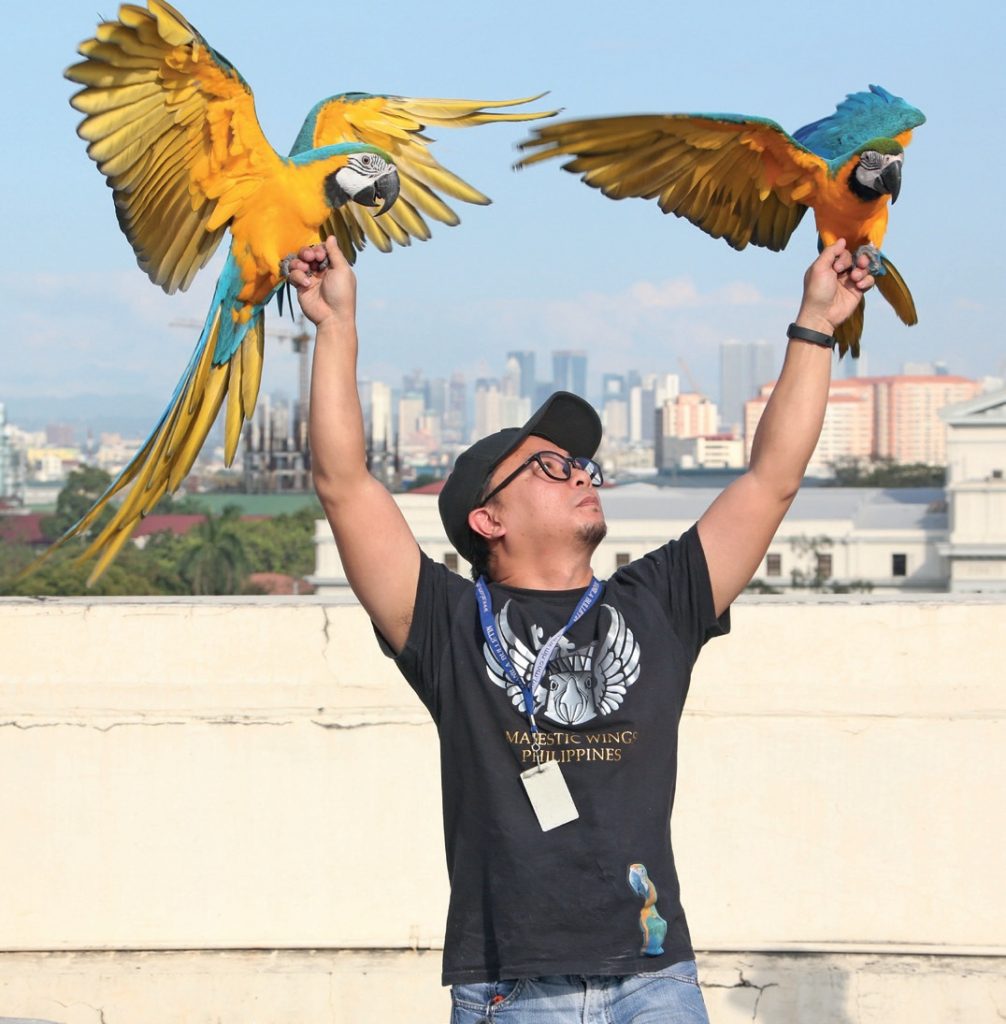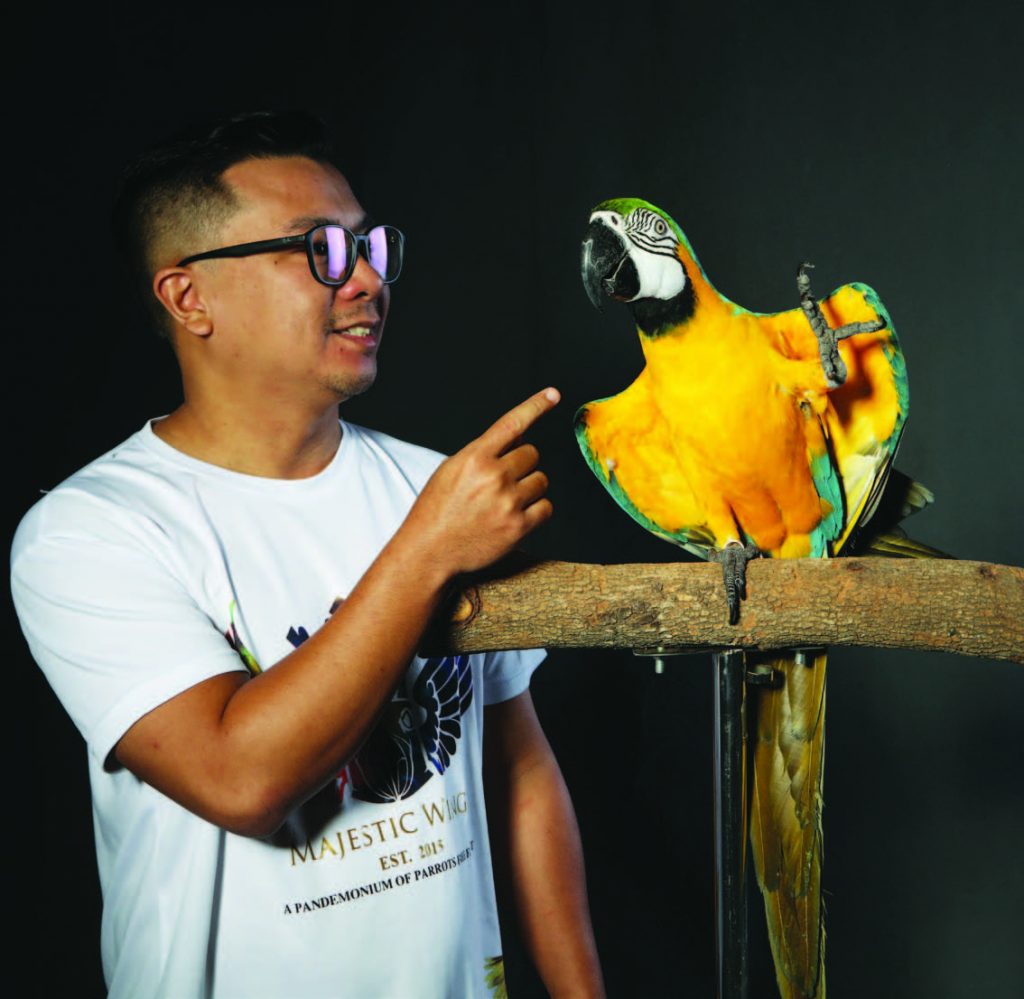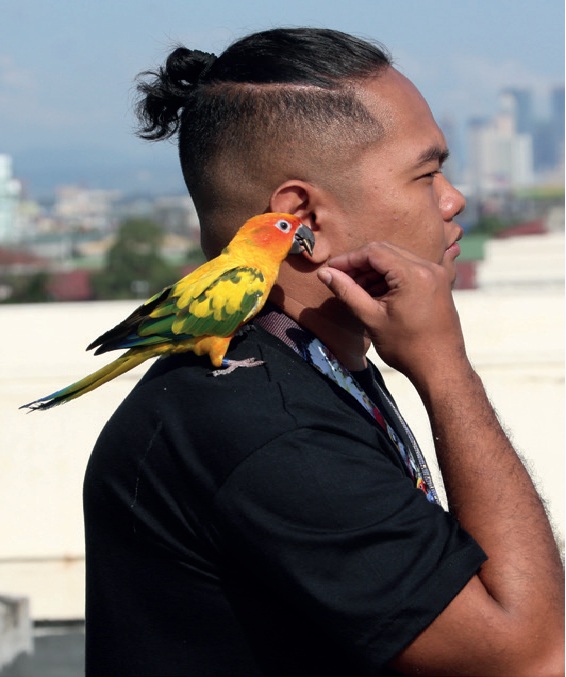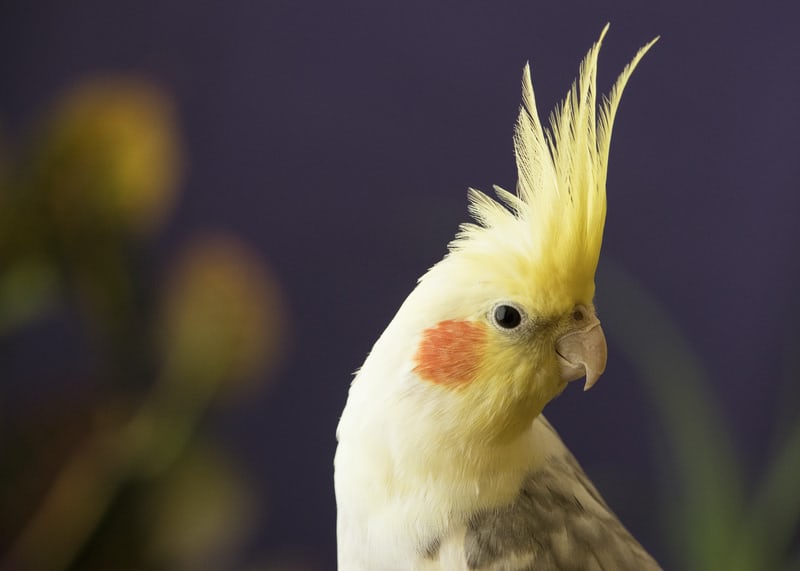Witnessing colorful birds swoop and glide amidst Manila’s skyscrapers was nothing short of amazing. All eyes were fixed on the magnificent beings as they soared freely through the air, displaying their aerial power, grace, and agility.
Prompted by whistles, the beautiful birds flew down from the sky one by one and perched onto the arms of their human companions.
They are the Majestic Wings.
The first flight
A small group of bird hobbyists came together in 2015 and formed Majestic Wings Philippines. Their advocacy centers around free-flight, which means that they let their avian friends fly freely outdoors.
“Free-flight – ito ‘yung binibigyan namin ng pagkakataon ‘yung mga alaga namin na lumipad gaya ng natural nilang ginagawa (this is when we give our companion animals the chance to fly as they would naturally),” explains Rick Espiritu, President and Founder of the organization.

Four years after their first meeting, the organization has now ballooned into several groups across the Philippines, many of which are composed of a diverse groups of people from all genders and ages.
“Maganda ang naidudulot ng free flight, lalo na ang positive feedback ng mga magulang nung aking mga member. Instead na maglaro sila ng mga video games, nauubos ‘yung oras nila sa pag-aalaga ng mga hayop. Na-momotivate or nabubuo yung pagiging responsible person [nila],” Espiritu says. (Free-flight comes with benefits, especially when [we get] positive feedback from our members’ parents. Instead of playing video games, the kids’ time is spent taking care of animals. They are motivated, or they become more responsible.)
Learning free flight
Despite birds being natural fliers, Majestic Wings Philippines still sees to it that they train their feathered friends before letting them fly out into the open.
But why would birds, who are natural born fliers, need flight training? Bird trainer Nurhisham Abdul Wahab says, “Yes, they can fly, but they fly away.”
Through free-flight trainings, birds at a very young age are taught to fly away and return to their humans. It may sound simple, but teaching birds free-flight takes a lot of patience and determination. In her article for Channel News Asia, Jalelah Abu Baker reported that it takes about two weeks for young birds to learn, while older ones might take two years. So, it’s better to start training them young!
Birds have unique personalities. They have different moods and traits, so it is best to learn more about them first. Spending quality time with them is a good way to start.“
Bonding lang po talaga ang kailangan kapag nag-aalaga ng ibon, para po masanay din at magtiwala sila sayo (All you really need is bonding [time] when you take care of birds, so that they get used to you and trust you),” 12-year old Clive Limeta, human companion to an African Love Bird, tells Animal Scene during a free-flight session at Inarawan, Antipolo.
Espiritu explained that the birds were trained to recognize their trainers’ voices and commands, including call-back whistles unique to each individual.
Importance of flying
Sadly, most people who take care of birds limit their companions’ activities inside a cage. For obvious reasons, that is not the proper way to take care of them; after all, birds are born to fly and, naturally, should be raised with the freedom to fly.
Birds are known to be very intelligent animals, so they need as much enrichment exercise as possible. Avian veterinarian Dr. Kenneth Welle said that it is very important to use flight as a mental stimulation for birds.
“Birds were designed to fly and the scenery rushing past them stimulates the optic cortex of their brain. The wind rushing over their feathers results in [the] stimulation of their sensory cortex, another way that flight affects the brain,” wrote Dr. Susan Orosz in her report for LafeberVet, an online library for veterinary and wildlife professionals.
Orosz also mentioned that flying is the most vital exercise for birds, and it lessens their risk of becoming obese.
The Majestic Wings
Majestic Wings Philippines introduced some of their best avian friends to us here at Animal Scene.
Blue and Gold Macaw

The blue and gold macaw is known for their gorgeous blue body and golden chest, hence the name. They have a large body frame about 35 inches long and have a wing span of up to 45 inches, so it’s hard to miss one out in the open.
They live up to more than 30 years and are very good communicators. Most of them eat a variety of seeds, fruits, nuts, and plant materials.
Sun Conure Parrot
Besides their bright sunny-yellow color, sun conure parrots are best known for their playful personality. They may be small but they can be very loud when they want to be!
They can live up to more than 20 years if cared for properly.
African Grey

So you need someone to talk to? The African Grey might just be the one for you!
African Grey parrots have the ability to talk and mimic sounds. They are also known for their high intelligence level, hence earning them the moniker “the Einsteins of the bird world.”
Eclectus
What makes the eclectus stand out is their fur-like feathers. Male eclectus have a bright green color, while females are bright red.
They need a low-fat, high-fiber diet not overly fortified with vitamins and minerals, because they have longer digestive tracts than other bird species. This kind of diet keeps the birds from developing fatty tumors and prevents vitamin and mineral toxicities.
Alexander Parakeet

The Alexandrine is the largest among all parakeets. They are named after emperor Alexander the Great, because of reports that he exported numerous species of parrots to Europe and the Mediterranean.
They have long tail feathers that can reach up to 14 inches in length. They are more playful than other species so get those rope toys ready!
Umbrella Cockatoo
Also known as the great white-crested cockatoo, this species is known for its white crest that raises like an umbrella when it is excited, agitated, or feeling playful.

They are charming as they are clingy, and need someone who can give them enough attention and spoil them.
African Love Birds

African Love Birds or Albs grow five to seven inches long and can live up to more than 15 years if cared for properly.
They can be territorial and naturally have a loud call. They are best suited for humans who could devote time with them on a daily basis.
Cockatiel

Cockatiels are native to Australia but because of their outgoing and easy personality, they are one of the most popular bird companions in the world, even ranking first in America.
They are best for kids as they love to give their favorite humans a snuggle. They are also talented whistlers and can serenade anyone who comes their way.
Photos by Jeffrey C. Lim
This appeared in Animal Scene magazine’s May-June 2020 issue.
You might want to read:
– The colorful and quirky Macaws
– The Philippine Serpent Eagle
– Villa Adoracion: A zoo born from inspiration






